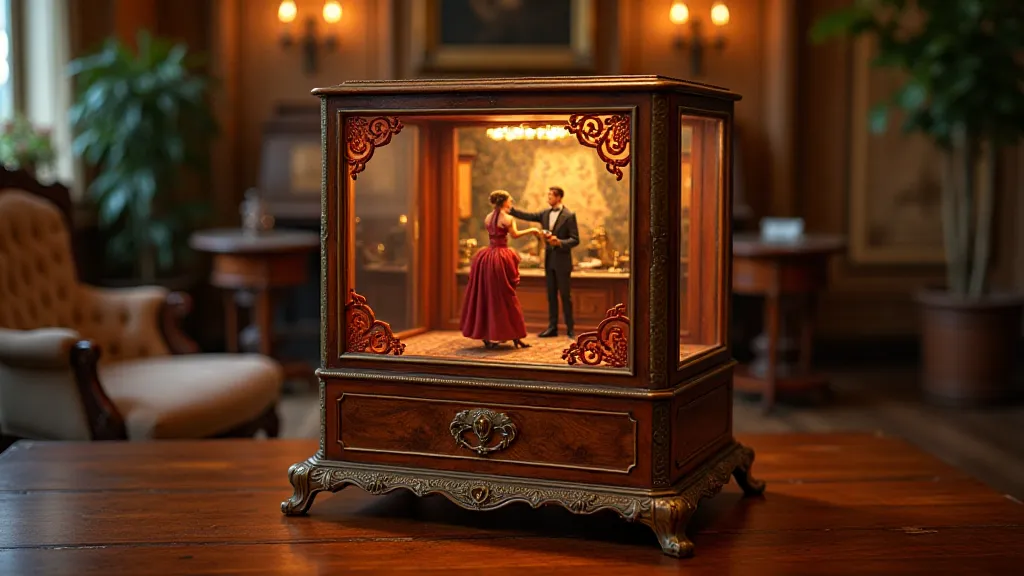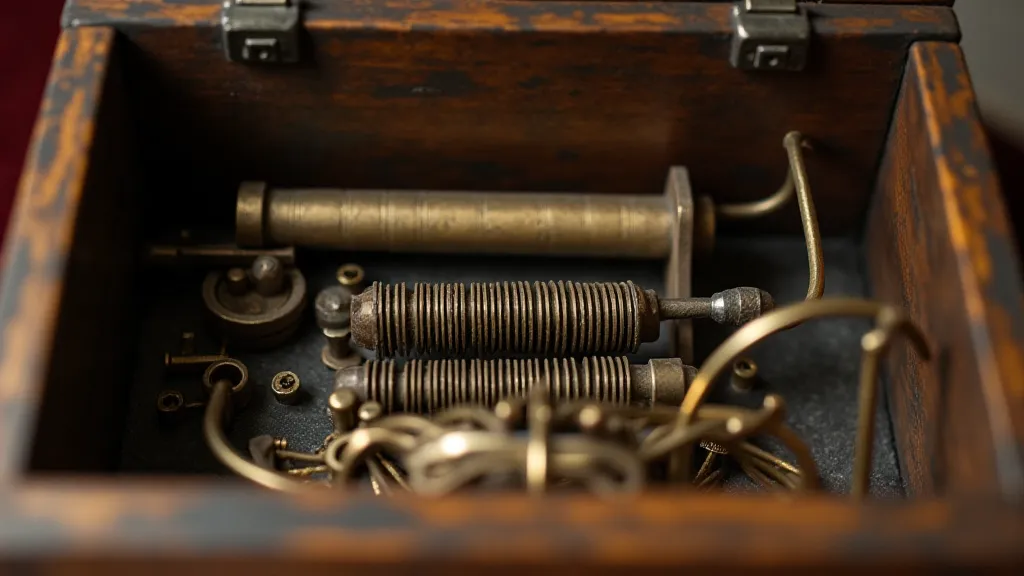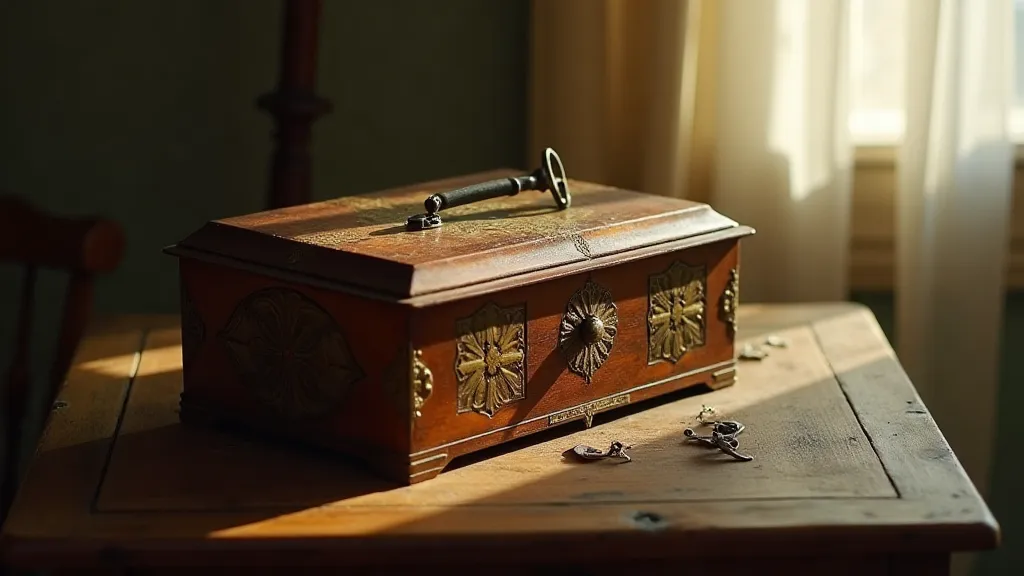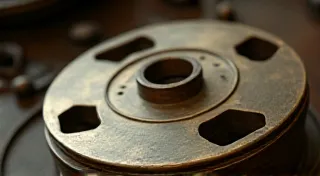American Musical Boxes: A Unique Style and Sound
Musical boxes, enchanting devices that conjure images of Victorian parlors and graceful dances, hold a special allure for collectors and enthusiasts worldwide. While Swiss musical boxes are arguably the most famous, American musical boxes possess a distinct character, reflecting the ingenuity and evolving tastes of the nation’s burgeoning industrial era. This article explores the history, design, and sonic identity that define American musical boxes, differentiating them from their European counterparts.
The Rise of American Musical Box Manufacturing
The story of American musical boxes isn't as long or as richly documented as the Swiss legacy. While Swiss manufacturers like Pailliassonne and Junod dominated the 19th century, the mid-to-late 1800s saw American entrepreneurs eager to capture a share of the growing market. European musical boxes were expensive to import, making them inaccessible to many. American ingenuity stepped in to address this demand.
Key players in the early American musical box industry include:
- Thomas Clement Hubbard (Hubbard & Allen): Widely considered the “father” of American musical box manufacturing, Hubbard, along with his partner Henry Allen, established the Hubbard & Allen Company in Boston, Massachusetts, in 1861. They initially produced music boxes utilizing Swiss movements, but quickly transitioned to designing and building their own.
- E.H. Black & Company: Located in Gloversville, New York, a hub for glove manufacturing (hence the name), E.H. Black & Co. started as a novelty item producer but became significant musical box manufacturers, known for their more affordable, mass-produced models.
- Rice & Kellogg: Another Boston-based company, Rice & Kellogg focused on higher-end models, often incorporating elaborate decorations and unique features.
The Civil War also played a role. The disruption of trade routes and increased demand for entertainment during the war spurred local manufacturing and fostered a burgeoning American industrial landscape. Maintaining these antique treasures can sometimes require specialized knowledge and finding replacement parts, which further highlights the dedication needed by collectors.
Distinctive Design Features of American Musical Boxes
While early American musical boxes often imitated Swiss designs, manufacturers quickly developed their own styles, reflecting American tastes and manufacturing capabilities. Here are some key design differences:
- Larger Size and Dimensions: American musical boxes tended to be larger and more substantial than their Swiss counterparts. This wasn't solely for aesthetic appeal; it also accommodated stronger, more robust mechanisms built to withstand greater use and the less-than-perfect materials often available in the early days of American manufacturing.
- More Elaborate Finishes: While Swiss boxes often favored simple lacquer finishes, American manufacturers explored a wider range of decorative techniques. These included marquetry (inlaid wood), intricate paintwork, and even lithographed images – a relatively new technology at the time – applied to the exterior.
- Less Intricate Cylinder Engraving: The cylinder, the heart of the music box, is where the pins that strike the comb are located. While Swiss cylinders were renowned for their elaborate and complex engravings, American cylinders were often simpler in design, reflecting the focus on affordability and mass production. This isn't necessarily a negative; it often results in a fuller, richer tone.
- American Folk Motifs: Later American musical boxes began to incorporate distinctly American imagery and motifs – scenes of frontier life, depictions of animals native to North America, and representations of popular Victorian-era pastimes.
- Unique Case Materials: While both countries utilized wood, American manufacturers explored different species and finishes. Rosewood, walnut, and mahogany were common, often adorned with brass or tin accents.

The Sound of America: A Unique Musical Identity
Beyond aesthetics, the sonic character of American musical boxes also sets them apart. Several factors contribute to this distinctive sound:
- Larger Combs: The comb, a series of metal teeth that vibrate to produce the musical tones, tended to be larger in American musical boxes. This contributed to a fuller, more resonant tone.
- Simpler Cylinder Design: The less intricate pin arrangements on American cylinders, while perhaps lacking the Swiss complexity, often produced a richer, warmer sound, particularly in the lower registers.
- Material Differences: Subtle differences in the metal alloys used for the cylinders and combs contributed to the overall timbre.
- Less Refined Manufacturing Techniques: While this might seem like a disadvantage, the slightly less precise manufacturing techniques of the era sometimes resulted in a more "organic" sound – a characteristic many collectors find appealing.
American musical boxes frequently played popular tunes of the day - waltzes, polkas, and operatic melodies. While Swiss boxes often featured classical pieces, American musical boxes catered to a broader audience and reflected the evolving musical landscape. The stories these devices tell, beyond the melody, offer compelling glimpses into the Victorian era, reminiscent of the clockwork echo that resonates through time.
Collecting American Musical Boxes: Challenges and Rewards
Collecting American musical boxes presents unique challenges and rewards. Due to the less refined manufacturing processes and the focus on affordability, many early American music boxes are in varying states of repair. Finding original, unrestored examples can be difficult, and restoration work is often necessary.
Challenges:
- Condition: Many examples are missing parts or have damaged mechanisms.
- Rarity: Some manufacturers produced relatively few units, making their music boxes highly sought after.
- Documentation: Less documentation exists compared to Swiss music boxes, making identification and provenance research challenging.
Rewards:
- Unique Beauty: Restored American musical boxes possess a unique charm and character.
- Historical Significance: Owning an American music box is owning a piece of American industrial history.
- Appreciation for Craftsmanship: The restoration process offers a fascinating glimpse into the ingenuity and resourcefulness of 19th-century American craftspeople.

The Intersection of Music, Mechanics, and Art
The fascination with American musical boxes often extends beyond their musical capabilities, encompassing their intricate mechanics and artistic design. For enthusiasts drawn to the broader field of automated figures and intricate devices, the combination of music and mechanical artistry found in musical boxes provides a captivating glimpse into a bygone era of innovation. This blending of musicality and mechanical expertise parallels the world of automata and music boxes, where figures come alive through music and ingenious engineering.
Understanding Value and Preservation
The value of vintage musical boxes is influenced by a complex interplay of factors, including manufacturer, condition, rarity, and provenance. Determining the true worth of a piece requires a keen eye for detail and a comprehensive understanding of the market. The process of evaluation can be intricate and often necessitates consulting with experts in the field. Further, determining the monetary worth is deeply entwined with the overall health of the piece—a piece in disrepair may be worth significantly less. Collectors seeking to understand the intricacies of these antique treasures can explore resources detailing the value of vintage music boxes to glean insights and guidance.

The Legacy of American Musical Boxes
While overshadowed by the international acclaim of Swiss musical boxes, American musical boxes hold a significant place in musical history. They represent a period of American innovation and industrial growth, reflecting the nation's unique cultural identity and design sensibilities. From the pioneering efforts of Hubbard & Allen to the mass-produced models of E.H. Black & Co., American musical boxes offer a captivating window into a bygone era. The warm, resonant sound and charming aesthetics of these timepieces continue to enchant collectors and enthusiasts worldwide, ensuring their enduring legacy for generations to come.





